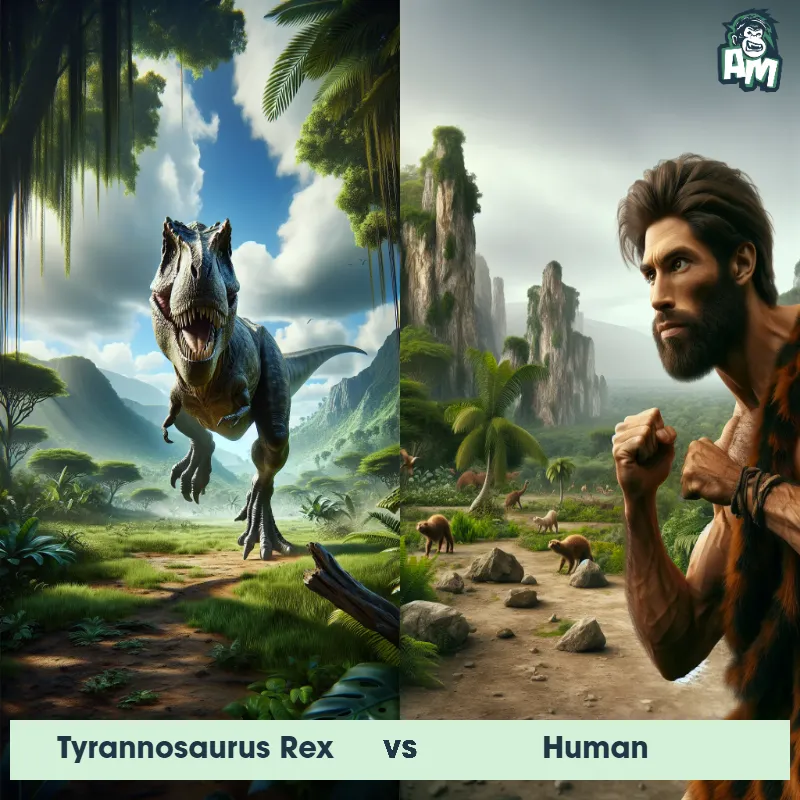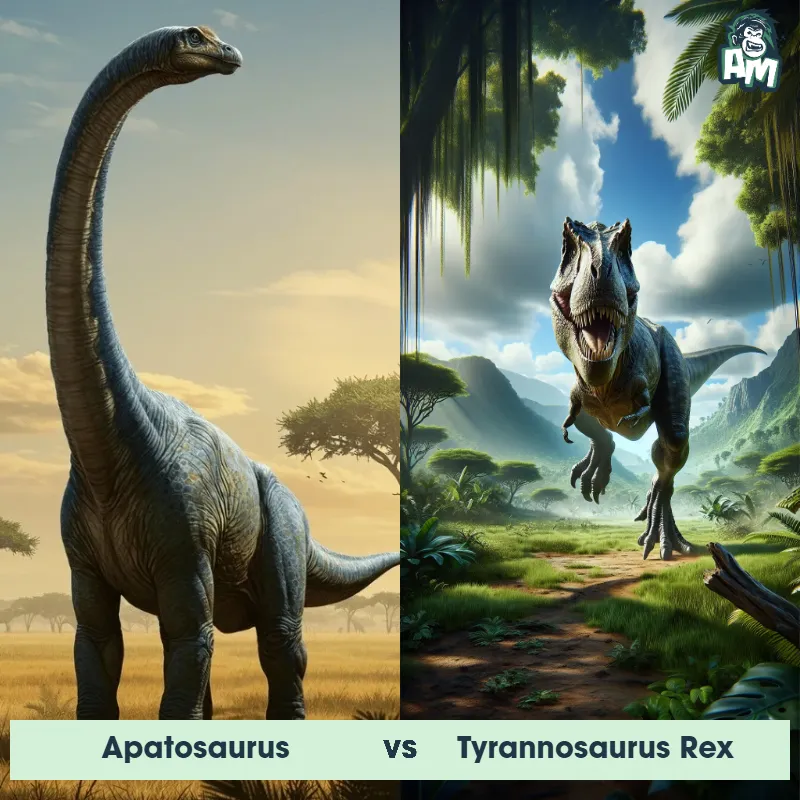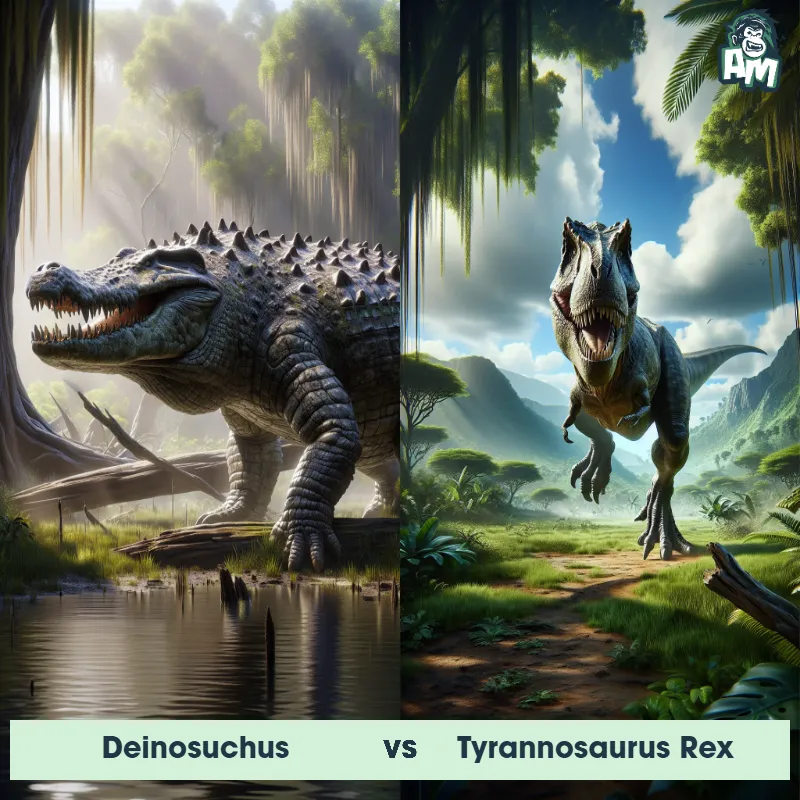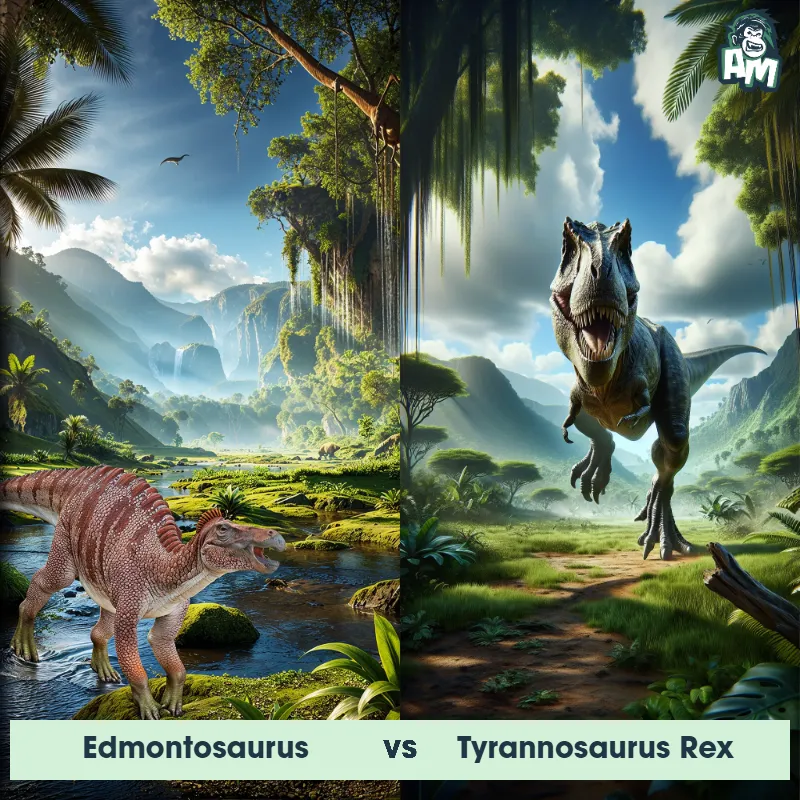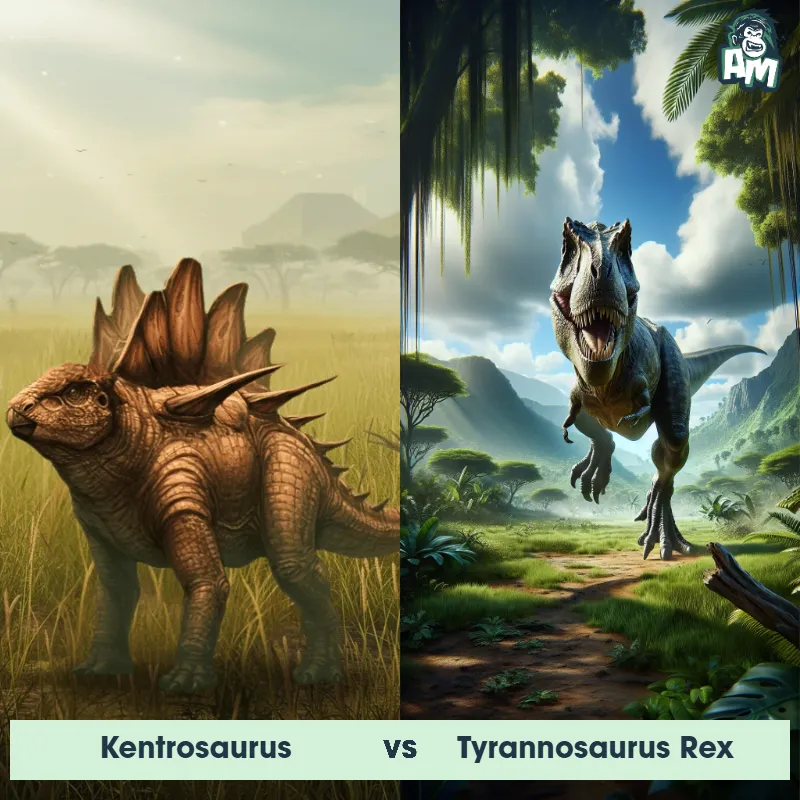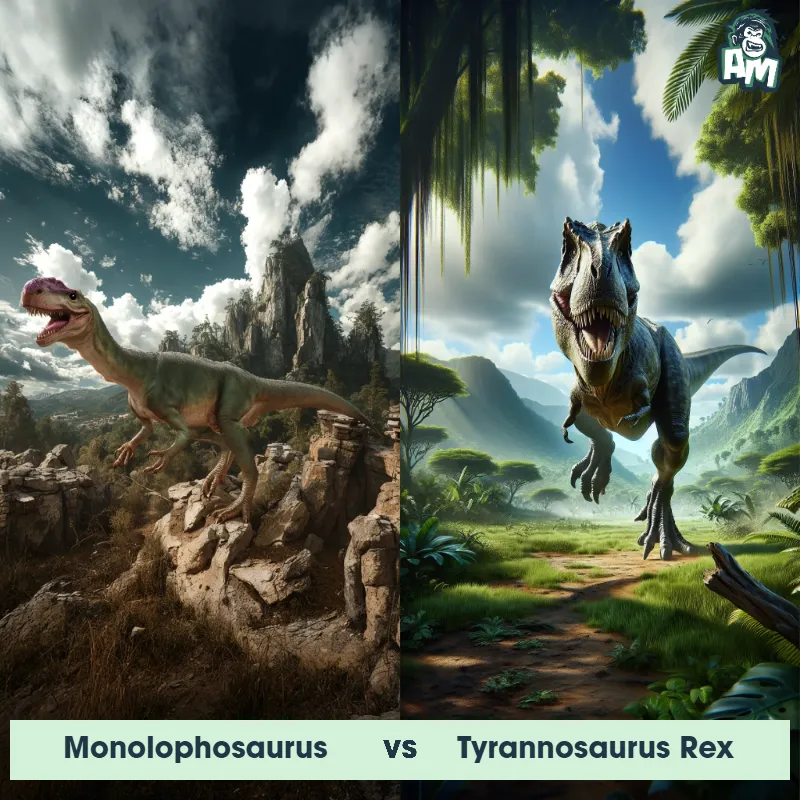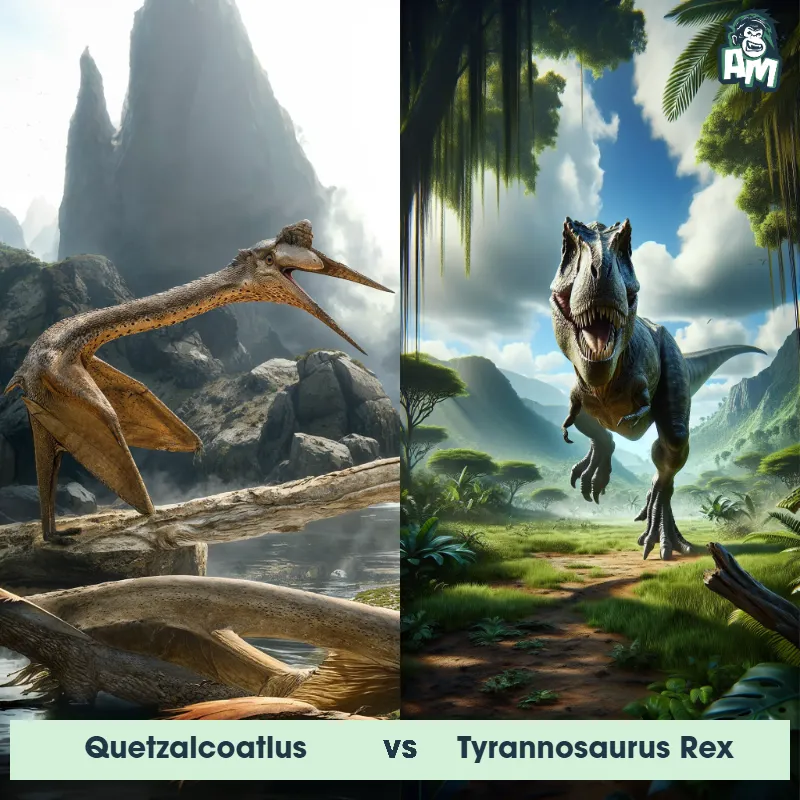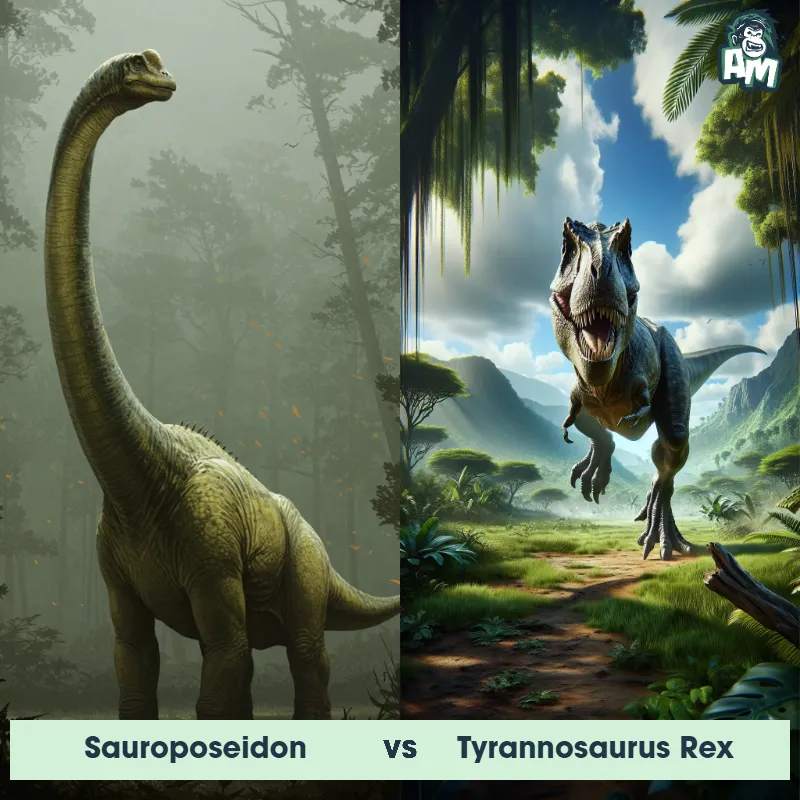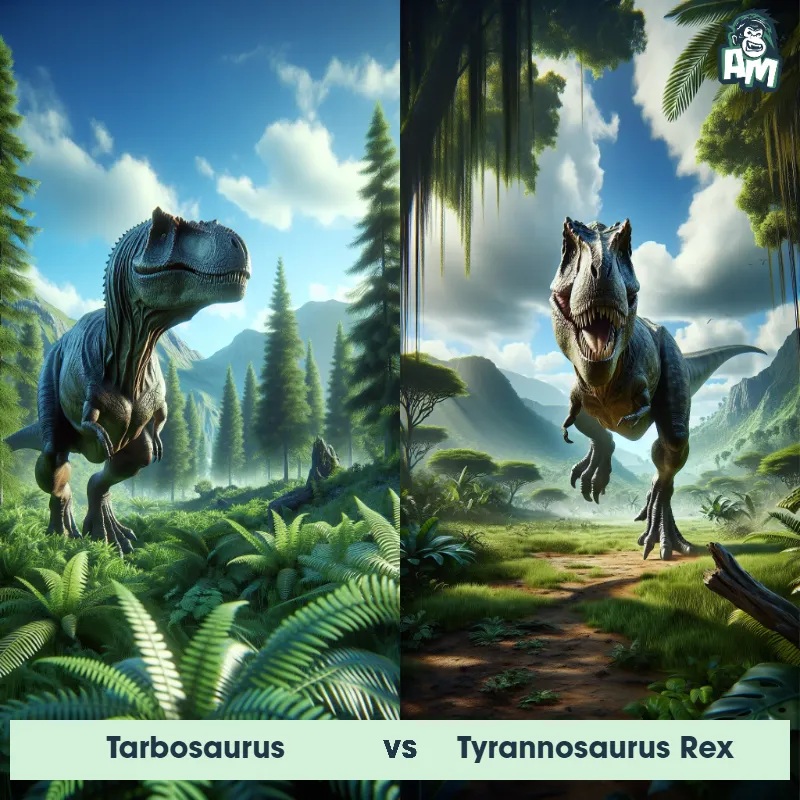The Tyrannosaurus Rex
The Tyrannosaurus Rex, commonly known as T-Rex, was one of the largest carnivorous dinosaurs that roamed the Earth during the Late Cretaceous period. It was characterized by its massive size, powerful jaws filled with sharp teeth, and short arms. T-Rex stood on two powerful hind limbs with a massive tail for balance, making it one of the most fearsome predators of its time.
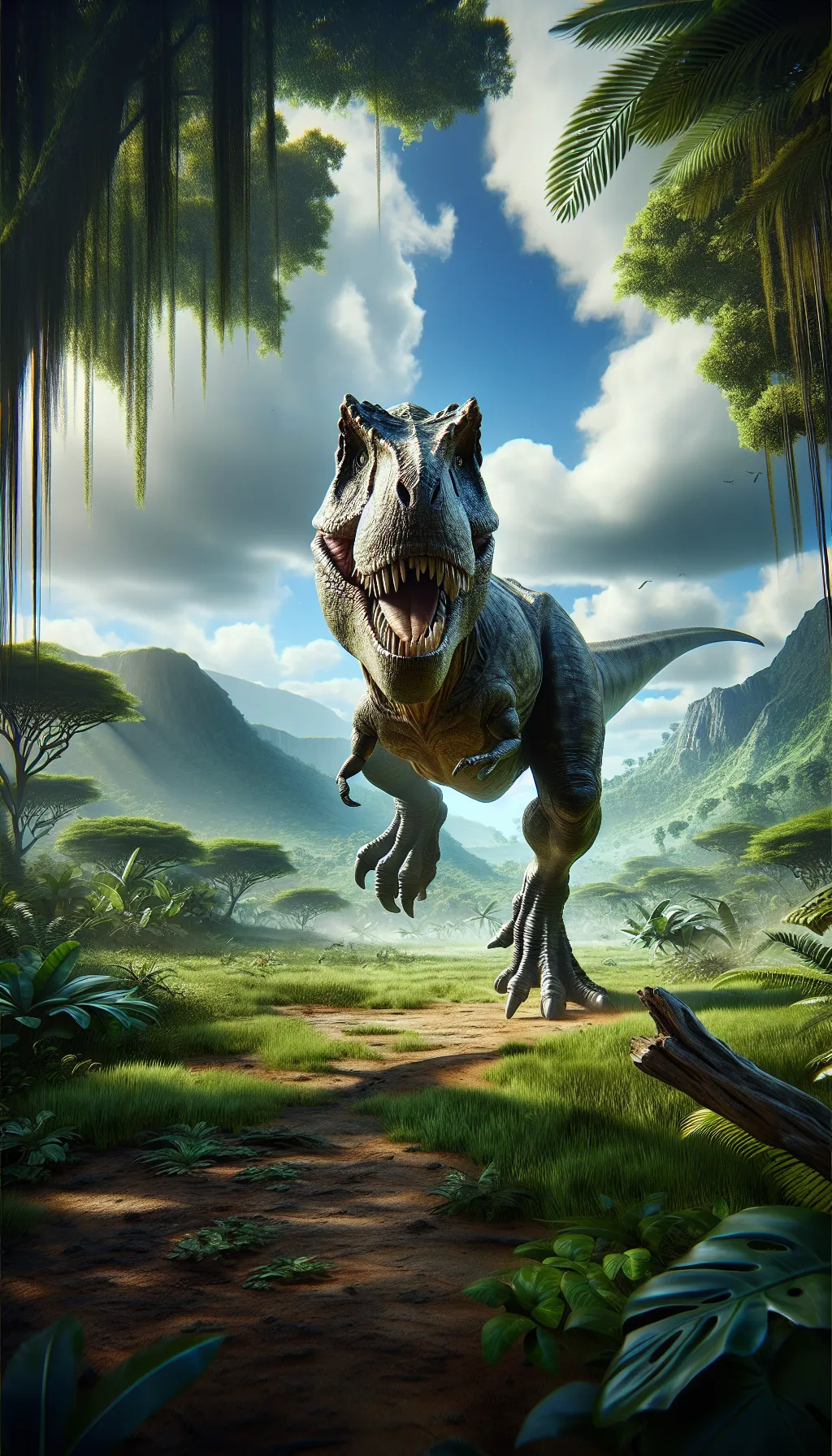
| Tyrannosaurus Rex | |
|---|---|
| Size | 40 feet long (12 meters) |
| Weight | 8 tons (7,260 kilograms) |
| Speed | 10-25 mph (16-40 km/h) |
| Key Strength | Powerful jaws |
| Biggest Weakness | Small arms |
| Scientific Name | Tyrannosaurus Rex |
| Family | Tyrannosauridae |
| Habitat | Land |
| Geography | North America |
| Diet | Carnivore |
| Lifespan | 20 years - 30 years |

The Tyrannosaurus Rex
The Tyrannosaurus Rex, commonly known as T-Rex, was one of the largest carnivorous dinosaurs that roamed the Earth during the Late Cretaceous period. It was characterized by its massive size, powerful jaws filled with sharp teeth, and short arms. T-Rex stood on two powerful hind limbs with a massive tail for balance, making it one of the most fearsome predators of its time.
Fun Fact: T-Rex had a bite force stronger than any other land animal that has ever lived, estimated to be around 8,000 pounds per square inch, allowing it to crush bone with ease.
| Tyrannosaurus Rex | |
|---|---|
| Size | 40 feet long (12 meters) |
| Weight | 8 tons (7,260 kilograms) |
| Speed | 10-25 mph (16-40 km/h) |
| Key Strength | Powerful jaws |
| Biggest Weakness | Small arms |
| Scientific Name | Tyrannosaurus Rex |
| Family | Tyrannosauridae |
| Habitat | Land |
| Geography | North America |
| Diet | Carnivore |
| Lifespan | 20 years - 30 years |
Tyrannosaurus Rex Matchups
We use AI to simulate matchups between the Tyrannosaurus Rex and other animals. Our simulation considers size, strength, and natural predatory behaviors to determine the most likely outcome.

Can't find the Matchup you want?
Create Your Own MatchupTyrannosaurus Rex: Diet, Predators, Aggression, and Defensive Behaviors
What did Tyrannosaurus Rex eat?
Tyrannosaurus Rex was a carnivorous predator, meaning it primarily ate other animals. Its diet consisted of large herbivorous dinosaurs such as Triceratops and Hadrosaurs. Scientists believe that T. Rex had a powerful bite force and sharp teeth designed for tearing flesh.
Did Tyrannosaurus Rex have any predators?
As one of the largest predators of its time, Tyrannosaurus Rex likely did not have any natural predators. Its massive size, strength, and sharp teeth would have made it a formidable opponent for any other dinosaurs that may have tried to challenge it.
Was Tyrannosaurus Rex aggressive?
Tyrannosaurus Rex is often portrayed as a ferocious and aggressive predator in popular culture. While it is likely that T. Rex was indeed an apex predator and displayed aggressive behavior when hunting for food, their actual behavior is still debated among scientists.
Did Tyrannosaurus Rex fight?
Tyrannosaurus Rex was a solitary predator and may have engaged in combat with other members of its species, especially during mating season or when competing for food. Fossil evidence suggests that T. Rex may have fought with each other using their massive size and powerful jaws.
How did Tyrannosaurus Rex defend themselves?
Tyrannosaurus Rex had several physical adaptations that helped it defend itself against threats. Its large size, powerful hind limbs for running, and strong tail for balance and agility would have made it difficult for predators to take down. Additionally, its sharp teeth and powerful bite force could inflict serious damage on any potential attackers.
What was Tyrannosaurus Rex's biggest weakness in a fight?
Despite their formidable size and strength, Tyrannosaurus Rex had some weaknesses in a fight. One of the most significant weaknesses is their relatively short arms, which were not as effective in grappling or defending against attacks from other predators. Additionally, their massive size and weight made them slower and less agile compared to smaller, more nimble predators.
Fun Fact: Despite its reputation as a ferocious predator, T-Rex may have also been a scavenger, feeding on the remains of other animals rather than actively hunting them down.
Fun Fact: Scientists have theorized that the Tyrannosaurus Rex may have had feathers covering parts of its body, possibly for display or insulation purposes.



